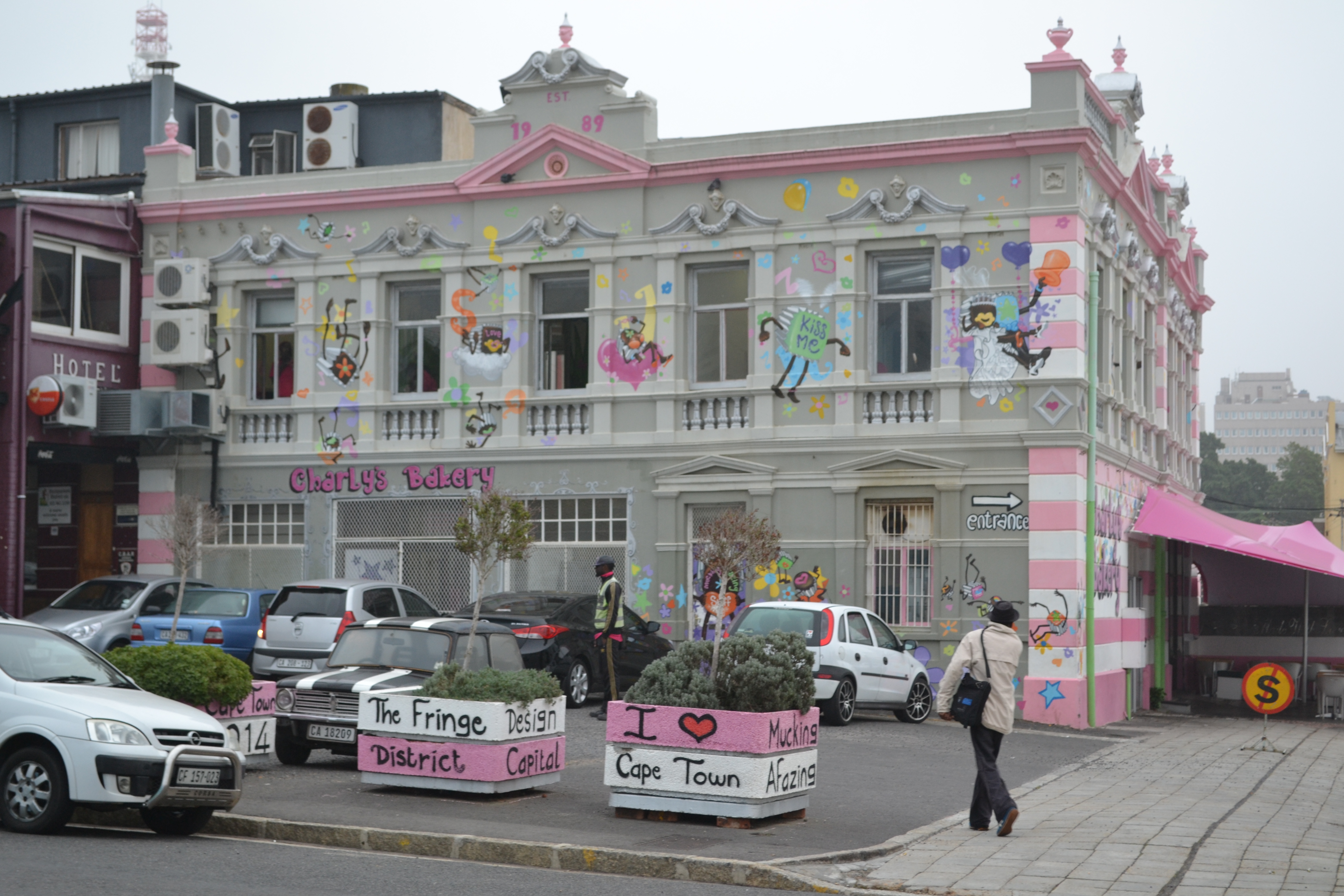
By Charley Locke
“We object to the fact that you’re painting jumping cupcakes on this historical landmark, but it doesn’t get heard.” Chris Julius, an archivist at the District Six Museum, was giving me a walking tour of the neighborhood. Fifty years ago, the Jewish bookstore acted as a local landmark and community space at 38 Cantebury Street. A bakery, cheerily decorated with cartoonish pink and purple cupcakes, inhabits the space now.
District Six was once a vibrant neighborhood in the center of Cape Town. After the Group Areas Act of 1950, South Africa’s apartheid era government systematically moved all the colored residents, who had predominantly comprised the population of the neighborhood, into Cape Town townships. Since the elections of 1994, previous residents of District Six, predominantly now in their sixties or older, have tried to reclaim their old homes through a painstaking land claim process. In most cases, these physical homes no longer exist.
And the ruins of the old District Six – of homes, businesses, schools – are being replaced as well. In some ways, this story of gentrification could be told the world over: by building a new neighborhood atop the old, new residents are utilizing the cheap rent and central location to create “The Fringe,” a neighborhood increasingly desirable to aspiring artists for its cheap rent and hip atmosphere.
But unlike other communities – Cape Town’s own Woodstock, or Brooklyn’s Williamsburg – the story of this neighborhood is one of recent loss and injustice, as the Group Areas Act turned the lively District Six into a ghost town half a century ago. In a way, this makes it an ideal location for The Fringe. No one lives there now. There’s not a local population to displace. But advocates for the old neighborhood, like Chris Julius and her colleagues at the District Six Museum, argue that in repainting the crumbling walls of the largely uninhabited lots, new residents are whitewashing the physical neighborhood, just as the apartheid government, designating the area as Whites Only, did to the colored community.
There’s no clean solution to a tension that arose out of such clear injustice. As Chris Julius explains, the area is now “salted earth.” Noor Ebrahim, a founder and tour guide at the District Six Museum who grew up in the old neighborhood, admits, “it will never be the same – you cannot expect that.” No matter the future of District Six, it will never be able to bring back the vibrant pre-apartheid neighborhood remembered by its former residents.

